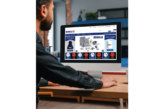
In the second of a series of articles, Jagvir Bains identifies one of the aftermarket supply chain’s core issues, and pinpoints exactly where the independent motor factor sits within this problem.
Historically, independent motor factors sourced product from a UK-based supplier, one which would import products from all parts of the world, re-box them into own-branded packaging, and adopt flat pricing models coupled with rebate. The net result generally made the independent factor uncompetitive. For example, branded brake pad’s rebate would range from 10-55%, depending on how sharp your negotiation skills were.
Most independent factors would incorporate the rebate into the selling price on most products. This model was open to fluctuation: and thus caused major disruptions to the independent aftermarket. The larger groups benefit from a greater size, ubiquity, and well-planned supply chains to counter the competition. They succeed by having fewer links within the supply chain, licensing brand names, and anchoring on to other well-known brands. This is all backed by a strong distribution network and delivery models, translating to low prices for trade and retail customers.
Managing a supply chain will require dedicated teams in every area the chain touches. It’s safe to say that supply chain management is both an art and a science, and that it requires in-depth market knowledge. Long gone are the days of selling popular Ford Escort, or BMW E46 aluminium, wishbones.
Some independent factors are sitting on thousands of pounds of dead stock, and that’s not including impress stock that’s taking up needless space.
Poor pricing, a lack of product life cycle analysis, including the absence of new-to-range part numbers, coupled with the vehicle scrappage schemes that exhausted the government’s £400 million budget limit in 2009, are all issues that have contributed towards the independent offering the wrong products, which is now amounting to dead stock. These issues translate to exponentially weaker bottom lines. This begs the question: what happens when those part numbers don’t sell?
Some independent motor factors have gone down the route of generating cash flow by showcasing their dead stock, and moving part numbers on online platforms, but all they appear to be doing is generating cash flow with non-existent margins. Factors should be identifying where the margin can be made, and from where they should be sourcing products, in an effort to shrink dead stock.







